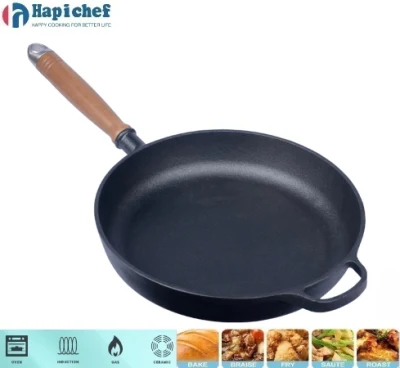cast iron skillet on glass cooktop
Cooking with Cast Iron Skillets on Glass Cooktops A Comprehensive Guide
Cast iron skillets have charmed home cooks and professional chefs alike for centuries. Renowned for their heat retention and distribution, these skillets deliver superior cooking results. However, with the advent of modern kitchen designs, many are left wondering can you use a cast iron skillet on a glass cooktop? This question has become increasingly relevant as more kitchens feature sleek and stylish glass or ceramic cooktops.
Understanding Glass Cooktops
Glass cooktops offer a modern aesthetic and are easy to clean, making them a popular choice in many households. They use radiant heat or induction cooking methods, which rely on either electrical coils beneath the surface or magnetic fields to generate heat. While these cooktops are efficient and visually appealing, they also require careful handling of cookware to avoid scratches and damage.
Pros and Cons of Using Cast Iron on Glass Cooktops
Pros 1. Even Heat Distribution Cast iron skillets are excellent at distributing heat evenly, allowing for perfect searing and browning of meats and vegetables. 2. Versatility These skillets can be used for a variety of cooking tasks, from frying to baking, and can transition from stovetop to oven. 3. Durability A well-seasoned cast iron skillet can last a lifetime and even be passed down through generations.
Cons 1. Weight Cast iron cookware is significantly heavier than most other cookware types, which can put stress on the glass surface. Dropping a cast iron skillet could easily crack or damage the cooktop. 2. Scratches The rough bottom of some cast iron skillets can scratch the smooth surface of a glass cooktop if dragged or moved carelessly. 3. Thermal Shock Sudden temperature changes can cause the glass to crack. Placing a cold cast iron skillet on a hot cooktop, or vice versa, poses a risk of thermal shock.
Best Practices for Using Cast Iron on Glass Cooktops
cast iron skillet on glass cooktop

To ensure safety and achieve the best cooking results when using a cast iron skillet on your glass cooktop, follow these guidelines
1. Choose the Right Skillet Opt for a cast iron skillet with a smooth, flat bottom. This helps maximize contact with the cooktop surface and minimizes the risk of scratching.
2. Use Caution When Placing Cookware Always lower the skillet onto the cooktop gently. Avoid sliding the skillet to prevent scratching. If you need to move it, lift it rather than dragging.
3. Manage Temperature Gradually Avoid shocking the glass by gradually raising or lowering the heat. Start on a low or medium heat and adjust as necessary. Always allow the skillet to heat up gradually.
4. Clean Properly After using your skillet, clean it carefully to avoid leaving residues that could burn onto the cooktop. Use a soft sponge and non-abrasive cleaner on the glass surface, and season your skillet as needed.
5. Utilize Heat Diffusers If you're concerned about direct contact causing scratches or excessive heat concentration, consider using a heat diffuser. This will help distribute the heat, protecting both your skillet and cooktop.
Conclusion
Using a cast iron skillet on a glass cooktop can be a rewarding experience if done with care. The key to a successful cooking journey lies in understanding the limitations and requirements of both the cookware and the cooktop. By following best practices, you can enjoy the numerous benefits of cast iron cooking without compromising the integrity of your modern cooking surface. So, embrace the charm and functionality of cast iron skillets while striding confidently into the world of glass cooktops! Your culinary adventures await.
-
Why Every Kitchen Needs a Casserole Cast Iron DishNewsJun.24,2025
-
Experience the Tradition and Quality of Cast Iron CookwareNewsJun.24,2025
-
Double Sided Cast Iron Grill PanNewsJun.24,2025
-
Cast Iron Dutch Ovens You’ll Actually UseNewsJun.24,2025
-
Buy Cast Iron Griddle for Everyday CookingNewsJun.24,2025
-
Barbecue Iron Grill Cooking PowerNewsJun.24,2025
-
Standard Product Lines from Cast Iron Cookware SuppliersNewsJun.11,2025
